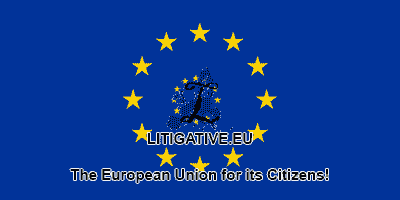ArcelorMittal demands EU net-zero steelmaking 2050 as Europe's biggest steelmaker, ArcelorMittal, revealed plans on Thursday (24 June) to arrive at carbon lack of bias in the EU by 2050, demanding anyway that achievement will rely upon open help and motivating forces, including a carbon outskirt charge.
The arrangement is intended to adjust the organization's objectives to the European Union's objective of slicing discharges to net-zero by 2050, a dedication the coalition settled on under the Paris Agreement on environmental change.
For the time being, the organization says it is focused on Europe's 2030 atmosphere focus by growing better approaches to expand the utilization of low-quality salvaged material in its essential steel creation process.
"ArcelorMittal Europe is doing a ton of work to build up a way to net zero," said Aditya Mittal, the CEO of ArcelorMittal Europe and CFO of the worldwide gathering.
However, "we do require strategy motivating forces" to arrive at the EU's 2050 carbon lack of bias objective, he told columnists during an online press preparation on Thursday, saying that will require ventures worth $15-25 billion throughout the following 30 years.
"It needs a collaboration. The help the EU and part states can provide for guarantee we have all around structured approach to make huge scope, serious, carbon-impartial steelmaking a the truth, is basic," Mittal said in an announcement.
Carbon fringe charge
Among those is a 'carbon fringe alteration system' to make European steel serious with imports from areas that don't force comparative guidelines on CO2 outflows, the organization said.
ArcelorMittal demands EU net-zero steelmaking 2050
The European Commission's arrangement for a carbon outskirt charge is "extremely reassuring" and "heartily invited," said Geert van Peolvoorde, CEO of ArcelorMittal Europe level items.
He cautioned, be that as it may, that an ineffectively planned fringe assessment could have "negative impacts" on the reasonability of European residential businesses "because of conceivably huge increment in CO2 costs".
Regardless, Peolvoorde said the fringe expense would should be "corresponding to free designations" of CO2 contamination credits circulated to European steelmakers under the EU's carbon showcase, the outflows exchanging plan (ETS).
Up to that point, Mittal stated, "there will be sure ventures that we will make as an organization" in the following decade. In any case, "we have not sketched out what we will contribute paying little mind to the strategy motivating forces until 2030," he said because of an inquiry.
Ventures that will proceed paying little mind to extra open help incorporate expanded utilization of salvaged materials and some hydrogen ventures, which are now profiting by examination and advancement subsidizing at EU or national level, Mittal demonstrated.
Two courses to carbon lack of bias
ArcelorMittal laid out two courses to carbon lack of bias, one of them including hydrogen as a swap for flammable gas as a reductant in the steelmaking procedure.
Peolvorde forewarned, in any case, that "we are numerous years away" from huge scope reasonable inexhaustible hydrogen for steelmaking.
For that to occur, costs of renewables-based hydrogen would need to fall fundamentally, from around €4 per kilogram presently to around €1-2 for each kg, said David Clark, VP at ArcelorMittal responsible for system, business coordination and arranging.
The other course includes a mix of clean power, more prominent circularity in sourcing crude materials and carbon catch and capacity (CCS) innovation to balance emanations.
Motivating forces to accomplish this incorporate state help support thus called "agreements of distinction" to overcome any barrier between the CO2 cost on the carbon advertise and the carbon value that would be required to make the ventures advantageous.
By putting resources into the two courses, ArcelorMittal claims it can "fundamentally lessen" all procedure outflows by 2030 "while hanging tight for the huge scope, reasonable sustainable power source required for hydrogen-based steelmaking."
The two courses depend on three clean wellsprings of vitality to accomplish carbon nonpartisanship:
Sustainable power, for example, wind and sunlight based,
Round carbon, utilizing biowaste materials, for example, ranger service and horticulture deposits, to create bioenergy; and
Carbon catch and capacity (CCS) where CO2 is caught before it is transmitted, and afterward moved and put away underground.
# ArcelorMittal demands EU net-zero steelmaking 2050 #

